The high cost and low pace of traditional drug discovery and development processes have shifted the interest of major pharma companies towards finding new uses for already existing drugs. Drug repositioning is creating a buzz, especially in rare and neglected diseases as it decreases the overall cost of bringing a drug to the market. Repurposing is based on observations, existing disease information, pathways, targets, ligands, and drugs’ pleiotropic effect. Utilization of already existing drugs for new diseases is cost-effective and time-saving since the pharmacology, safety, toxicity, and formulation profiles of these drugs are already established.
Benefits of Drug-Repositioning
The repositioning is an important lever for pharma companies to improve R&D productivity and enables R&D teams to:
- Fast-track development and reduced risk-Repositioning can reduce the drug development process from the typical 10-17 years for a de novo drug to 3-12 years (Exhibit 1). Further, this lowers risk because the molecule’s pharmacokinetic and safety profile are already known.
- Increase revenue and return-on-investment-Repositioning can characterize more profitable indications and recover abandoned projects.
- Expand IP Protection- New uses for an existing molecule can result in extended patent protection, depending on the level of novelty and whether any reformulation is involved. Further, proactively recognizing indication expansion opportunities earlier in the development process can result in achieving greater revenue during the period of exclusivity.
Exhibit 1: De Novo Drug Discovery & Development vs Repositioning Timeline
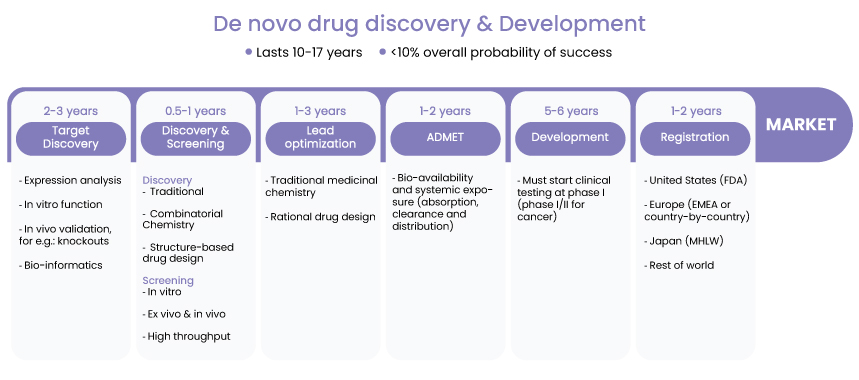
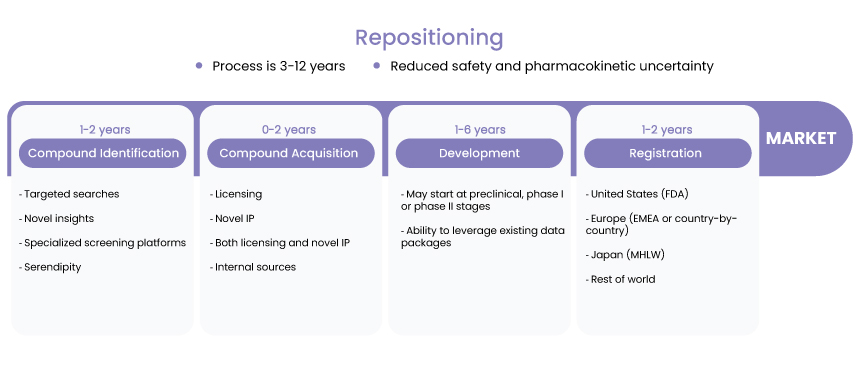
Potential Drug-Repositioning Strategies
Drugs that are potential candidates to be repurposed or reformulated must go through a set of parameters, a lot of study and research goes behind the whole process to evaluate the efficacy and safety of drugs [Exhibit 2]. There are several databases that provide information regarding approved drugs, failed drugs, and drug classes that can be considered for repurposing. Post repurposing & reformulating a drug the efficacy of a drug is examined by clinical trials where the adverse effects of the drug on the patient are monitored keeping in mind the age, sex, prior health conditions, and other important patient information, also pharmaco-epidemiological analysis provides clarity in this direction.
Exhibit 2: Parameters Considered for Drug Repositioning
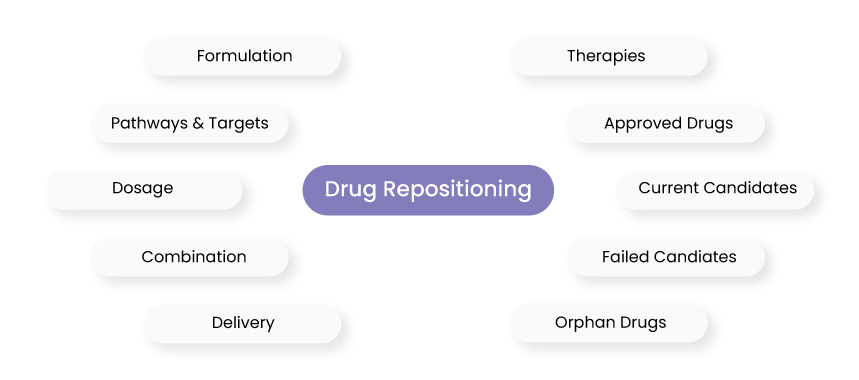
Approach to Develop New Drug-Repositioning Pipelines
A major challenge faced during drug repositioning pipeline development is to detect novel drug-disease relationships. These drug-disease relationships are pathway-specific and to address this challenge there are various experiment-based, clinical-based, and computational-based approaches. The development comprises methods such as blinded, target-based, knowledge-based, etc, preclinical studies, and clinical development as represented in Exhibit 3.
Exhibit 3: Schematic Methods to Generate Drug-Repositioning Pipelines
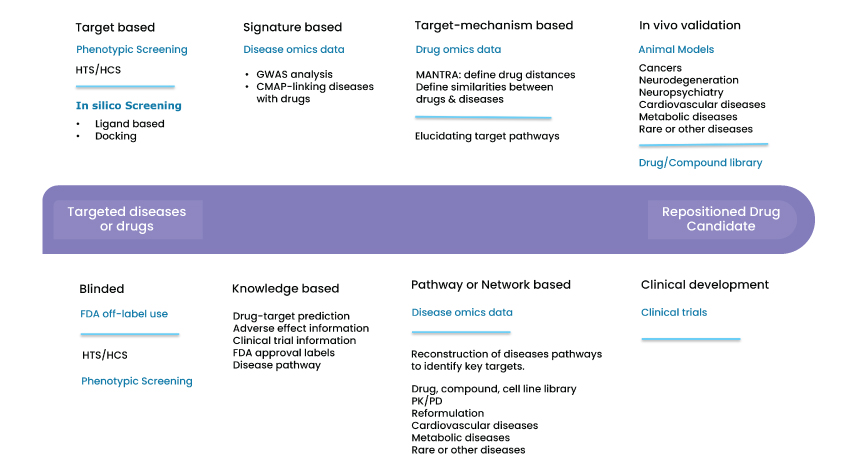
Drug Repositioning for Targeting New Indications
In the COVID-19 pandemic, drug repositioning has received significant attention and to fight the pandemic, several drugs have been repositioned. More than 100 countries performed clinical trials of already existing drugs to develop a drug against the virus. Below is a list of a few repurposed drugs used for the treatment of COVID-19.
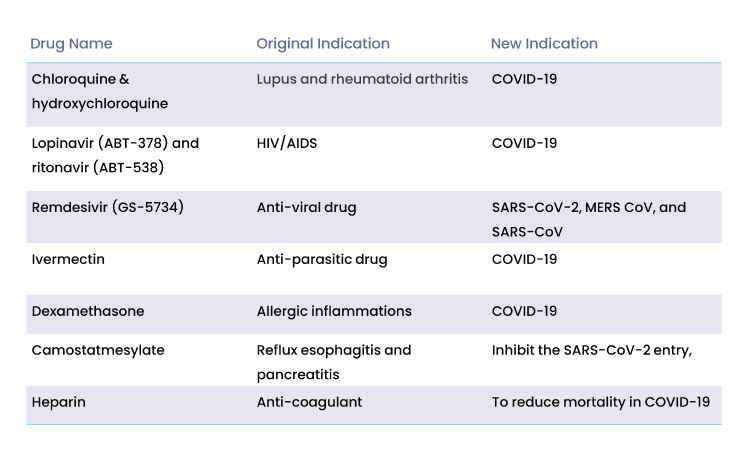
Recent research shows that drugs used to treat arthritis (TNF inhibitors), can reduce the risk of Alzheimer’s in patients. Sildenafil, which is a drug used to treat erectile dysfunction can be repurposed to treat Alzheimer’s. An anti-parasitic drug, MBO has been repurposed to treat pancreatic cancer.
Therapeutic Areas and Key Players in Drug Repositioning:
Drug repurposing has become a major element in the drug market, as not only this process is highly cost-effective for pharmaceutical companies, but it also provides a speedy new treatment option to suffering patients. The potential target therapeutic areas include oncology, neurodegenerative disease, and CNS disorders among others. Below are the key players in the drug repositioning space.
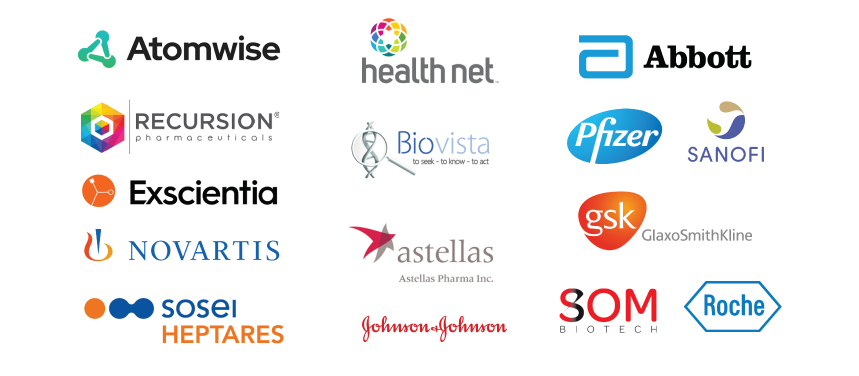
Regulatory Approval Pathways for Repositioned Drugs
Drug repositioning cuts down the research and cost of drug discovery and development, but it has its own limitations. Drug patentability can play a crucial role in drug repositioning as in a drug class, prior patents may already cover new indications. Repositioned drugs are patented only as method of treatment (MOT) claims, and these MOT patents are difficult to prevent from infringement. For repositioned drugs IP protection is limited, some IP issues prevent a few repositioned drugs from entering the market. Despite advancements in omics data and a large set of information in various data sets, establishing a proper drug repositioning approach is a challenge due to these regulatory affairs. The European legislature provides holders with regulatory protection in the form of market protection and data exclusivity [Exhibit 4].
Exhibit 4: Drug Repositioning-Regulatory Pathways in Europe
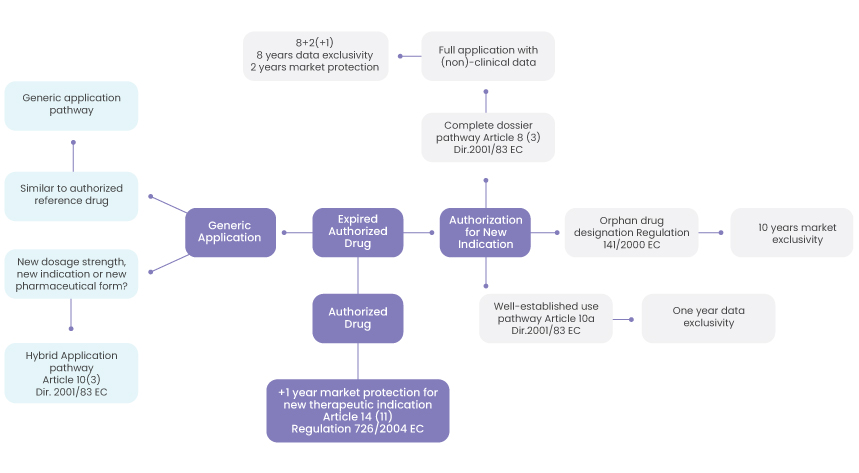
Drug Repositioning – Outlook
The outbreak of the ongoing global pandemic has highlighted drug repurposing as an effective strategy to search for treatment. It has also paved the path for the development of orphan drugs for orphan diseases. Some pharma companies such as Biovista, and Roivant are doing major work in drug repurposing. Biovista uses an AI-based pipeline for drug repurposing in diseases such as epilepsy, oncology, and other orphan disease.
How Can IeB Help You?
Ingenious e-Brain is a global provider of intellectual property, technology, commercial, and market research solutions. Ingenious e-Brain creates solutions that are adapted to your company’s needs. Our staff assists clients in all parts of their business with a unique blend of skills, proven processes, and knowledge base. With the help of our experience in drug life cycle management, IeB can provide actionable insights into the drug repositioning space by identifying drug-target receptor pathways, emerging repositioned drugs, and competitors’ strategies. IeB can also provide answers to various other queries using a variety of problem-solving techniques.



